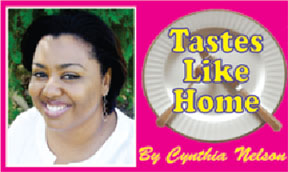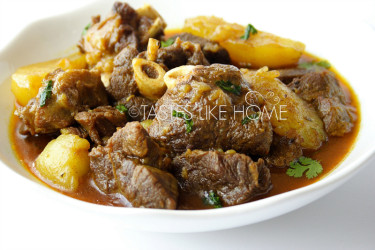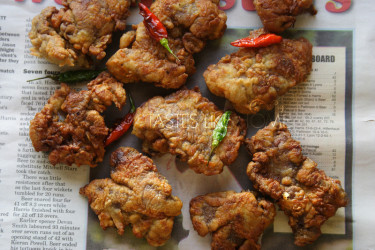Hi Everyone,
Last month, an article was published in Stabroek News (Friday, August 14) written by Guyana’s former Director of the Government Analyst Food & Drug Department, Marilyn Collins, titled – ‘Food Fortification & The Health of the Guyanese Population.’ In the article Ms Collins referenced the statistics of the most recent survey conducted in Guyana (in collaboration with the Pan American Health Organization PAHO) on iron deficiency anaemia. The current data shows some improvement compared to the last survey figures for the period 1996 – 1997.
The improved figures can be attributed to the several programmes developed and implemented since then to address the issue. However, as Ms Collins points out, in recognizing anaemia as a public health issue – the Ministry of Public Health placed emphasis on it in this year’s observance of Nutrition Awareness Week – we must address this serious issue by coming up with an “all-encompassing cohesive programme.” Such a programme would see consultation, coordination, implementation and monitoring across various agencies and entities, both in the public and private sectors.
 As with most things, it takes time for governments to actually get things done, for a variety of reasons, and that’s universal, it’s not unique to Guyana. While they have a responsibility to us as our leaders, I am one of those people who believe that government cannot do everything for us, and that wherever possible, if we can, we should work towards improving our own lives. In this case, we can take responsibility for our health by ensuring that we eat balanced meals and try to significantly lower those iron deficiency anaemia figures. Staying away from much of the science, I’ll share with you some information I learnt during a nutrition course I took a few years ago. I hope you find it useful.
As with most things, it takes time for governments to actually get things done, for a variety of reasons, and that’s universal, it’s not unique to Guyana. While they have a responsibility to us as our leaders, I am one of those people who believe that government cannot do everything for us, and that wherever possible, if we can, we should work towards improving our own lives. In this case, we can take responsibility for our health by ensuring that we eat balanced meals and try to significantly lower those iron deficiency anaemia figures. Staying away from much of the science, I’ll share with you some information I learnt during a nutrition course I took a few years ago. I hope you find it useful.
Before I continue, it is important to note that not all anaemia is related to iron deficiency.
What is iron?
Iron is a mineral, an important metallic element that we need daily in small amounts. Because we only need it in small amounts, iron is referred to as a micronutrient. The quantity we need in terms of milligrammes changes through various stages of our lives and is also based on our gender. Females generally need more iron than men, for reasons such as pregnancy and breastfeeding. The only time period that both genders require the same amount of iron is when we are growing – from birth until we become a teenager – 13.
Why do we need iron?

Iron is needed for the formation of haemoglobin. Haemoglobin is the protein in the blood that carries oxygen to all of our tissues. If our haemoglobin is low or found lacking, it may be due to the lack of iron in the body, this condition is known as anaemia. Anaemia can cause us to tire easily reducing our ability to work, it reduces our resistance to diseases and for pregnant women it can lead to complications in childbirth. In school-age children it can jeopardize the learning process; children can become tired and unable to concentrate. As a result, children can develop learning difficulties that can become permanent.
In the most recent data referenced by Ms Collins in her article, it stated that 24% of young children and 20.8% of school-age children have iron deficiency anaemia. We must commit ourselves to significantly reducing, I prefer altogether turning those figures to a single digit – 0.
Types of iron
Iron comes from both animal and plant sources. The 2 types of iron are – haem and non-haem. Haem iron comes from animal sources (including poultry and seafood). Non-haem iron is derived from plant sources that include not only vegetables but also certain peas, beans and nuts.
Haem iron, the one from animal sources and seafood, is more easily and better absorbed in the body than non-haem iron. According to retired Chief Nutritionist of the Barbados Nutrition Center, Ministry of Health, Joan Sealy, the non-haem iron ingredients contain other elements that often bind or change the mineral when cooked, making the non-haem iron, not easily absorbable in our bodies. Please do not interpret this as a reason not to eat fruits and vegetables! Fruits and vegetables contain many of the other nutrients that we cannot live without. Read on.
Haem-iron foods
Meats, particularly red meats such as beef and lamb are excellent sources of iron, so too are poultry and seafood such as fish and shrimp. Offal – liver, heart and kidney are excellent sources of iron, so too are sardines and tuna (canned in oil), oysters, clams, mussels and prawns; egg yolks too.
Non-haem-iron foods


Photo by Cynthia Nelson
Dried peas such as pigeon/gungo peas, black eye peas, red kidney beans, broad beans and chickpeas (channa/garbanzo) are good sources of iron. Dried fruits like prunes, apricots, figs and raisins as well as dried pumpkin seeds, watermelon seeds, and sesame seeds are good sources of iron. Flaxseed is another very good source of iron.
When it comes to nuts, almonds (with the skin on), pistachios and peanuts provide 6 to 7% of the daily value of iron per 1-ounce serving.
Greens and dark leafy vegetables all contain iron – pak choi, spinach, all types of callaloo (bhajee), broccoli and cabbage bush. Cabbage bush is the large outer hard fibrous leaves of the cabbage plant.
Absorbing iron
I’ve already explained how the body does not efficiently absorb the non-haem iron so let’s focus here on the haem iron that is easily absorbed.
In the presence of Vitamin C – the absorption of iron is maximized. In other words, when you eat iron-rich foods accompanied by other foods, whether they are fruits or vegetables, that contain Vitamin C, more iron from the original ingredient is absorbed and is done so easily. For example, if you sautéed your chicken livers with green sweet peppers, iron absorption is maximized when eaten. If you stir-fry your beef with broccoli, bingo! If you have your fish with green plantains, you have a winner.
It is important to note that there are some foods that inhibit the absorption of iron especially if you consume them at the same time as a part of your meal. It does not mean that you cannot eat or drink these foods but it is better if you consume them between meals or at least 1 hour after your iron-rich meal.
The tannin in tea (black and green) as well as coffee and cocoa along with dairy products that are high in calcium can inhibit the absorption of iron. Drinking fresh juices such as orange, grapefruit, guava and West Indian cherry with your iron-rich meal helps in the absorption of iron.
Most if not all foods contain one and more nutrients, however, each food has more of a particular nutrient than another. For example, an ingredient can be rich in fibre and have calcium too; another ingredient can be rich in potassium and also contain iron.
The point is that ALL foods have nutritional value and each food is rich or richer in one nutrient especially when it contains more than one nutrient. Keep this in mind when you plan your meals based on your nutritional needs.
Some Vitamin C-rich
foods
Green plantains
Green and red bell (sweet)
peppers
Tomatoes
Karaila (bitter melon)
Bora
Okra
Broccoli
Cabbage
Kale
Paw-paw (papaya)
Pineapples
Ripe Mangoes
Oranges
Guava
Grapefruit
Limes
Lemons
Five finger (carambola)
Tangerine
Fresh cilantro, thyme and parsley are among the herbs rich in Vitamin C
Cloves, paprika and saffron are among the spices rich in Vitamin C
When it comes to good nutrition, it is about eating a wide variety of foods to get the full complement of the daily-recommended value of nutrients.
Cynthia





